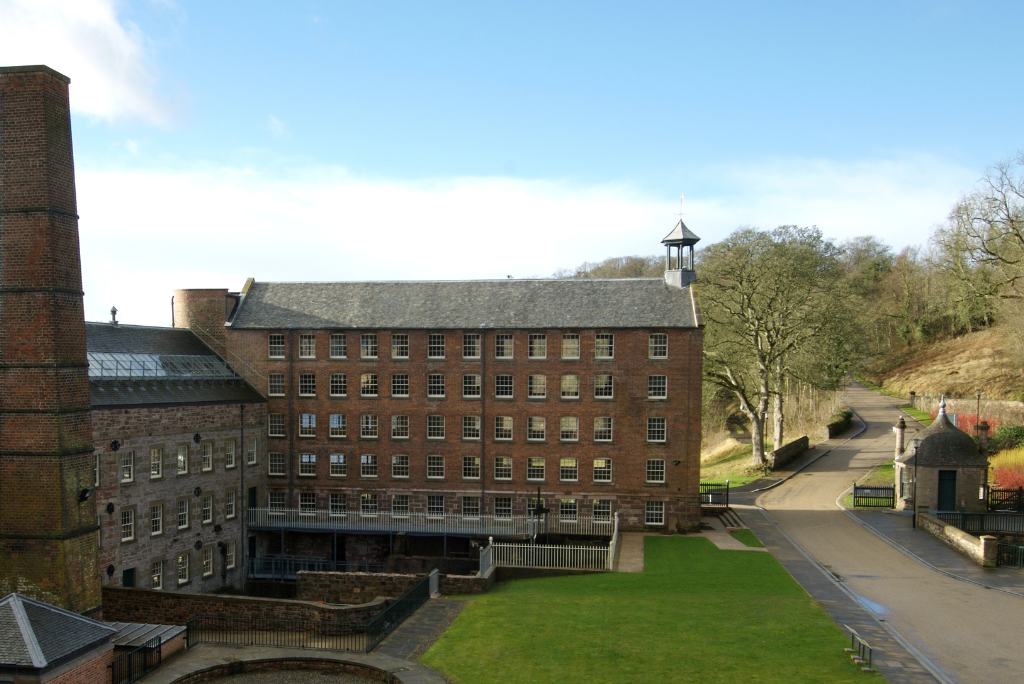Children from poorer families had long worked alongside their parents, contributing to the labour force. But in the late 1700s, the Industrial Revolution brought a major shift, with thousands of children worked long hours in factories, mines, and mills often in dangerous conditions and with little chance of receiving an education. But over the course of the century, Scotland began to shift away from this system through a series of legal and social reforms.
One place where this transformation can be clearly seen is Stanley Mills, a textile factory established in 1786 on the banks of the River Tay.
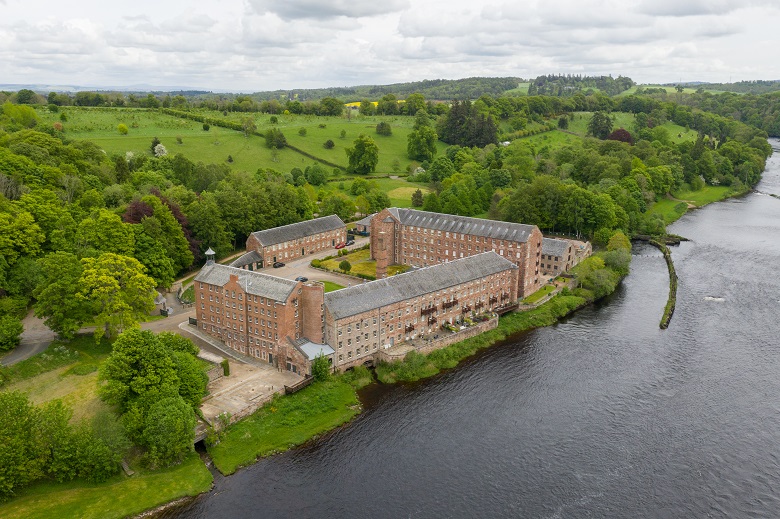
Stanley Mills in Perthshire. Aerial photo taken by drone.
Like many mills of its time, it relied heavily on child labour. At that time, it employed around 350 people, 85% of which were women and children. The smaller, more nimble hands of children and women were better suited to working the machinery and they were also cheaper to employ than men. Even children were expected to work 13-hour shifts, starting at 5.30am and finishing at 7pm, with only short breaks for meals.
Most of the young workers at Stanley Mills had little time for school. Long shifts, low pay, and exhausting conditions meant that learning often came second to survival. Some of the children were orphans, living without the support of their parents. Yet even in these tough circumstances, efforts were made to provide education. From fee-paying schools to Sunday classes and government reforms, the story of Stanley Mills shows how literacy slowly became part of working children’s lives.
The Industrial Revolution comes to Perthshire
Stanley Mills was designed not just as a factory, but as a complete settlement. Workers lived on site in stone and brick houses that offered much better living conditions than most labourers homes at the time. Even though mill work was tough and often exploitative, the promise of steady wages and decent housing made it an attractive option for many families.
The village was planned by the Duke of Atholl ‘s factor, James Stobie. It’s grid-like pattern emulated that of the New Town in Edinburgh. When the agreement was drawn up to open the mill at Stanley, the Duke of Atholl agreed to lease thirty acres of ground for a village and to spend £2,000 building houses.
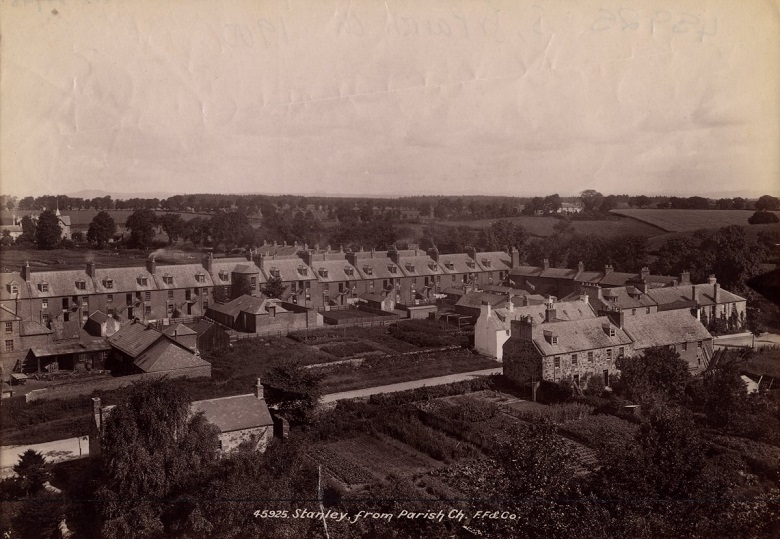
Zoom in on this image of Stanley village on trove.scot. © Licensed by University of Dundee Archive Services via SCRAN.
Many of the initial workforce came from the Duke of Atholl’s estates – which were then being cleared of tenants to introduce larger sheep farms – records indicate about 80 families were recruited from Gaelic-speaking Highland Perthshire.
Bell Mill, the first mill at Stanley, was completed by 1790 and is probably the best surviving example of a mill of this period. Its bell would have been used to wake the workers in the village in the days before alarm clocks.
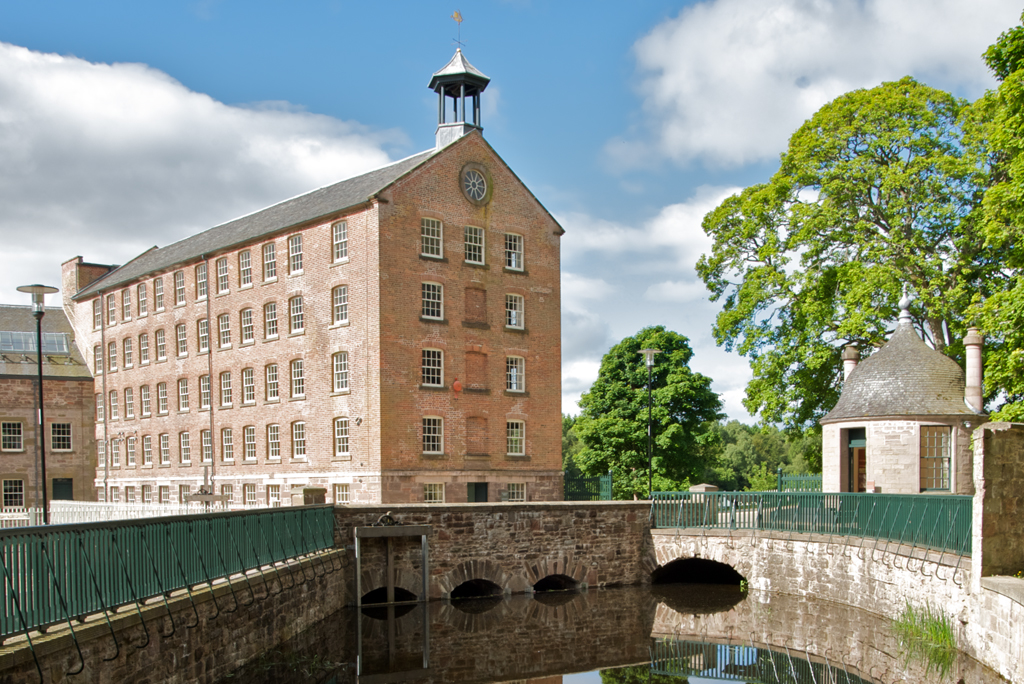
Bell Mill is one of the earliest industrial buildings on the site.
Small beginnings
Around the time the mill was built, a small private school was also set up to offer basic education. Unfortunately, we don’t know exactly which building housed the school within the complex. What we do know is that students had to pay fees to attend.
By 1825 the school had around 70 pupils, and the fees were around three to four shillings a quarter, but records show that the fees were paid very irregularly.
Sunday Schools helped fill the education gap in this growing workforce. Around 400 children (150 boys and 250 girls) attended these weekly classes, taught by the village schoolmaster, minister, and adult volunteers. These schools were often the only chance some children had to learn to read and write.
The 1833 Factory Act and the push for reform
According to the 1831 census, around three million people across Britain were employed in manufacturing, including nearly a quarter of a million in cotton mills.
There was a growing concern about the exploitative conditions in British factories and a commission was set to investigate and suggest improvements. When the Factory Commission gathered evidence at Stanley Mills it found that a 12-year-old girl, Mary Macgregor, had worked at the mill for three years and still couldn’t read. John Scott, a yarn dresser at Stanley, testified that although the company provided a school, the children preferred ‘to run about’ when the mill finished because of the long hours they worked.
In the wake of the Factory Commission things began to change. In 1833 the government passed a new Factory Act. It banned children under nine from working in textile mills and limited the hours for older children. It also required children under 13 to attend school for at least two hours a day. For the first time, factory inspectors were hired to make sure the rules were followed though with only four inspectors for thousands of mills, enforcement was difficult.
Following the Factory Act, in 1834, the mill owners at Stanley provided a better school with a teacher who could teach advanced subjects like Latin, Greek, and French. But even with these efforts, many children missed out.
The global cotton trade and its hidden human cost
By 1852, when Stanley Mills was sold to a new owner, nearly 1,000 people in the village were reported to be “entirely dependent on the works.” This made the community highly vulnerable to shifts in global trade and politics.
The workers at Stanley Mills were part of a broader system of exploitation that stretched far beyond Scotland. The cotton processed in mills like Stanley was imported from the American South, where it was grown and harvested by enslaved people under brutal conditions.
Although Britain had abolished slavery in the 1830s, its textile industry continued to profit from cotton produced through slavery across the Atlantic.
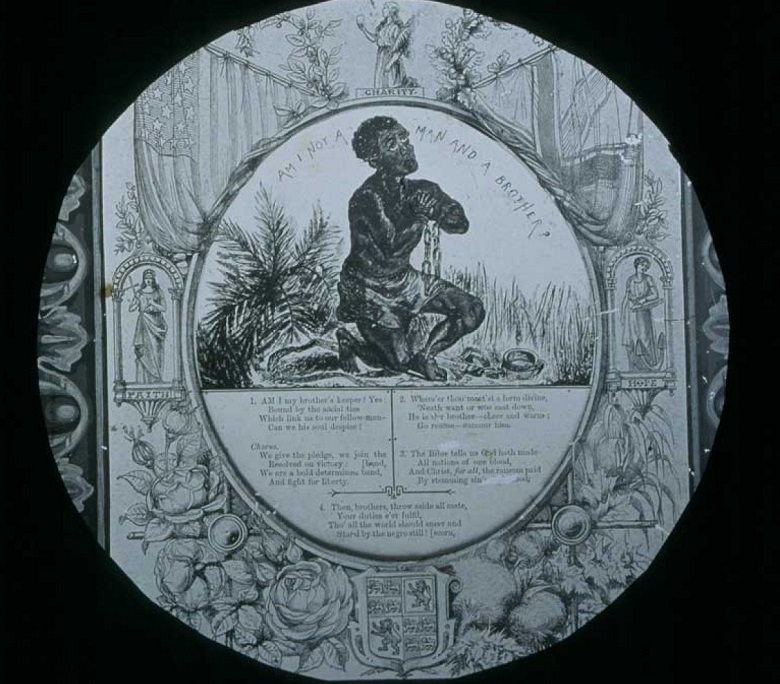
This lantern slide was likely used to encourage people to speak out against slavery in America by appealing to their sense of morality and justice. Take a closer look on trove.scot. © Licensed by East Lothian Museums Service via SCRAN.
The suffering of Scottish mill workers was real, but it existed within a global economy that was even more violently oppressive elsewhere. Recognising this connection is essential to understanding the full story of the cotton industry: one that relied not only on cheap local labour, but also on the forced labour of millions of enslaved Africans and African Americans. This part of the history has often been overlooked, but it is vital to acknowledge it as we reflect on the human cost behind industrial progress.
When the American Civil War broke out in the 1860s, cutting off cotton supplies, the impact was immediate and severe. The mills closed in 1862 and remained shut for five years, plunging the Scottish community into hardship. The so-called “Cotton Famine” revealed just how deeply the British textile industry was entangled with slavery across the Atlantic. When the mills reopened the population at Stanley was halved in size.
From factory floor to classroom
The 1833 Factory Act was a major turning point in reducing child exploitation in textile mills. Over the next decades, further reforms continued to gradually improved conditions.
The Education (Scotland) Act of 1872 made education compulsory for all children aged 5 to 13 in Scotland. While the legislation helped prevent younger children from working in factories, it also marked a significant shift in language policy. The Act effectively led to the suppression of Scottish Gaelic in schools, where pupils were often punished for speaking their native language.
In 1890, school fees were abolished, creating a state-funded system of free, standardised education. While this expanded access to learning, it also reinforced the dominance of English in classrooms, contributing to the decline of Gaelic as a community language. The effects of this shift are still felt today, with many Gaelic-speaking communities continuing to work toward language revitalisation and cultural preservation.
By the late 19th century, most children in Scotland were attending school regularly, and child labour had significantly declined due to these laws and the growing importance of education in society.
More about the mill
Much of the information in the blog comes from the excellent work of historian Anthony Cooke, who has carried out very valuable research on the development of Stanley Mills and its impact on the history of the surrounding area. Anthony also wrote our Stanley Mills Guidebook, available now in our shop. Well worth a read if you want to know more!
Check if we’re running any events at the mill on our event calendar.

